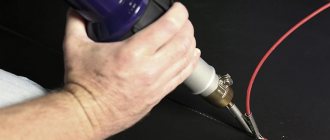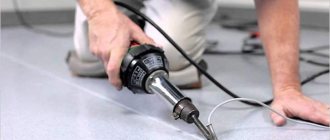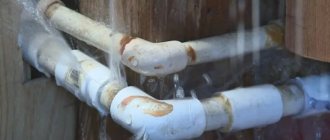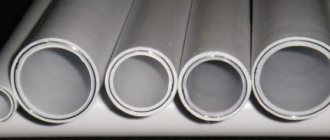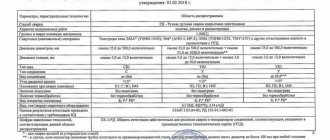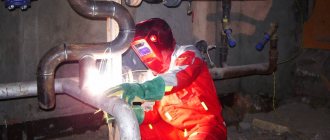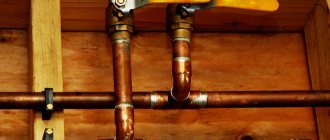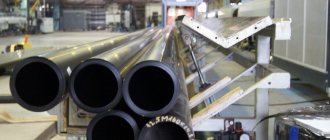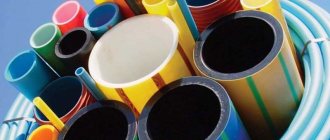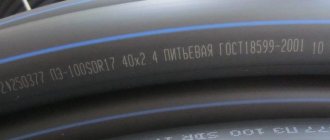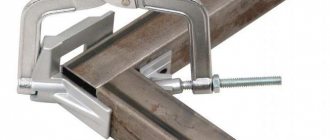The technology for welding PVC fabric is based on the property of polyvinyl chloride to melt under the influence of a relatively low temperature. The seams are sealed and are equal in strength to the base material. The work does not require professional training or sophisticated equipment. For example, welding of awnings made of PVC sheets can be carried out at home, even using a homemade machine.
Definition and purpose of hair dryer welding
The classic name for the hair dryer welding method is heated gas welding. The heated gas is most often air. In this regard, the more common name for welding with a hair dryer is hot air welding.
Heated gas welding is applied to products made from any thermoplastics of the 1st and 2nd groups, i.e. to materials that, when heated, are capable of transitioning into a viscous-fluid state, and after subsequent cooling, to a significant extent retain their original properties. If the material is subject to rapid oxidation when heated, it is recommended to use nitrogen as the heated gas.
As with any other method of welding plastics, when welding with a hair dryer, heating the surfaces to be welded (and possibly the filler material) and creating welding pressure are required.
Heating in this case is carried out by hot gas, which has low thermal conductivity. To ensure acceptable rapid heating of the material, the gas (air) temperature is selected significantly higher than the plasticization temperature of the corresponding thermoplastic. The optimal temperature of the heated gas depends on the shape and size of the products being welded (for example, on the thickness of the film), on the heating time (on the shape of the gas flow and the speed of the hair dryer), etc. For example, the recommended welding temperature for PVC fabric is about 500°C (see. 4.2), which is at least 300°C higher than the temperature at which the thermal destruction of PVC begins. What if the PVC fabric is not smooth, but corrugated? Thus, the risk of partial thermal destruction of the material when welding with a hair dryer is higher than with other welding technologies.
The method of creating welding pressure when welding with a hair dryer depends on the shape of the products being welded and the nozzle used. In fact, hot air welding consists of 4 different technologies:
- T.N. welding with a filler rod separate from the torch (definition from DVS 2207-3). Welding is performed with a hair dryer with a simple round nozzle that does not have contact with the welding rod. If the welding rod (and, accordingly, the products being welded) are made of hard material, then welding pressure can be ensured by pressing the relatively cold part of the rod in the direction perpendicular to the weld (see paragraph 3.2). This method is used for hot-air welding of profiles, pipes and sheets made of unplasticized PVC, isotactic PP, high-density PE, etc.
- Welding with a filler rod separate from the torch, but for soft materials. This is a linoleum welding technology. Welding pressure can be ensured with this technology only by pressing the heated welding rod into the prepared groove with a special profile roller (see paragraph 3.3).
- T.N. welding with heated gas tape seam. In the Russian interpretation - rod welding with a quick welding nozzle (see paragraph 3.4). The welding rod is fed into a special inlet hole of the nozzle and has time to warm up deeply inside it on its way to the parts being welded. Welding pressure is created by pressing the heated welding rod with the nose of the nozzle.
- Geomembrane welding technology (definition from DVS 2225-1). The technology is applicable both for welding waterproofing membranes and for welding fabric or film. Sheets of membrane, fabric or film are laid overlapping on a rigid base, and a flat hair dryer nozzle is placed between the layers. Welding pressure is created by rolling the top layer to the bottom layer with a soft heat-resistant roller (see paragraph 4.1).
None of the rod welding technologies can provide stable and accurately regulated welding pressure. We should add a high risk of overheating of the material when welding with a hairdryer, as well as a high dependence of the result on the human factor. If we compare a welded connection of two end-to-end pipes or sheets, made by two different technologies - butt welding with a heated tool and welding with heated gas, then we must also remember that a hair dryer provides only local heating; which means that the front of the weld is always hotter than the back, and this leads to additional stress in the finished welded joint.
In connection with the above, when pipes or sheets are butted, the strength of the connection made by heated gas with the filler rod is estimated at no more than 60% of the strength of the original products. For this reason, welding pipes with a hairdryer is only allowed if it is not a pressure pipeline.
In the case of welding polyethylene film, PVC fabric, etc. Overlapping materials, the strength of the joint can be adjusted by increasing the width of the seam. However, there is another danger here: not only the directly welded surfaces are subject to heating and partial thermal destruction, but also the heat-affected zones - they are the “weak link”. This “link” is weaker the more the material is subject to thermal destruction. However, welding with heated gas using a heat gun remains the most popular technology for welding PVC fabrics and films in the manufacture or repair of awnings, banners, etc.
Manual welding
When manually welding, before you start joining materials, you need to weld scraps of PVC film, having practiced on them. Having adjusted the temperature and pressure, you can begin working with the base material.
If possible, all seams should be made in a horizontal plane, then the clamping force can be precisely adjusted. The nozzle used should be 20 mm and the rollers 20 and 40 mm.
To obtain a high-quality seam, it is necessary to preheat the area of the PVC film being welded, lightly pressing it with a roller. The welding itself is carried out as follows.
The hair dryer moves along the connection line. The nozzle and, accordingly, the roller are at an angle of 45 ° to the edge of the film, while overheating the lower layer of material must be avoided.
If welding of a wide seam is required, it is done using the pre-welding method. First, a seam is formed in depth, at a distance of 2 cm from the edge of the PVC film.
Then the final formation of the seam is carried out. At the last stage, you need to ensure that the upper edge of the nozzle extends 3 mm beyond the border of the film.
The roller is moved parallel to the nozzle exit, making sure that the distance between them is 10-15 mm.
Heated gas welding equipment
Requirements for welding guns are specified in Appendix 2 to DVS 2207-3 (Germany), as well as in EN 13705:2004 (EC). In our country, the introduction of GOST for equipment for heated gas welding and extrusion welding is planned for 2016. The document, to a first approximation, is already ready, based on an identical translation of EN 13705.
The most significant regulatory requirements:
- Smooth adjustment of heating power;
- Handle made of material resistant to shock and temperature loads;
- When installing a welding nozzle that creates significant air resistance, the air flow must remain sufficient for heated gas welding technology;
- In case of overheating above a threshold value (for example, when the air flow is blocked), the protection system must turn off the heating;
- The heating should only turn on if the air supply is turned on. The heating should turn off without cutting off the air supply.
These formal requirements draw the line between welding guns and heat guns, which are also called heat blowers.
| Thermal guns/Thermal blowers |
Heated gas welding is used for construction, technical and industrial purposes. In addition to welding, powerful welding hair dryers have a wide range of applications: annealing old paint, heat shrinking, soldering and desoldering, etc. To emphasize the difference between a welding hair dryer and a heat gun, hot air blower or hair dryer, a welding hair dryer is called a construction hair dryer, technical or industrial hair dryer. This is unofficial terminology, not fixed in regulatory documents.
Since construction and technical hair dryers are designed for large volumes of professional work, in addition to the listed regulatory requirements, they also have the following differences from heat guns and heat blowers:
- Powerful motor and large efficient impeller provide high air flow and pressure;
- The rotor is well balanced, does not cause vibration, does not tire the hand and extends the life of the graphite brushes;
- The heating coil is not located on the hooks associated with the hair dryer body, but inside a replaceable ceramic heating element;
- Numerous and varied nozzles offered with construction and technical hair dryers do not fit the standard mounting diameter of heat guns. This is done intentionally: the heat gun cannot cope with the resistance of the welding nozzle to the air flow, the flow will drop catastrophically, and the heat gun, in the absence of overheating protection, will simply burn out.
Manufacturers offer construction, technical and industrial hair dryers in the form of three groups of equipment:
- Hand hair dryers;
- Automated welding machines;
- Stationary industrial gas heaters.
2.1. Manual construction and technical hair dryers
EN 13705:2004 and the GOST prototype divide manual equipment for hot gas welding into 2 separate groups - equipment with an external air (gas) supply and equipment with a built-in air blower. The design of a construction hair dryer with an external air supply formally includes a handle, a heating element and heater body, an air supply hose and a power cable. The design of a construction hair dryer with a built-in blower differs in that it does not include a hose, but does include the blower itself.
| Hairdryer diagrams |
In any scheme, construction hair dryers are usually designed to heat the air to a temperature within 700°C. A protection device that turns off the heating is set to this threshold level.
The main technical characteristics of the built-in air blower are the maximum pressure generated and the maximum flow. And the actual air flow depends on the total flow resistance, primarily in the heater and in the installed nozzle. The manufacturer calculates in such a way that if no nozzle is installed on the hair dryer, the flow will be maximum, then even when the heating power is set to maximum, the threshold air temperature will never be reached. And if the smallest nozzle for this hair dryer is installed, the flow will decrease, and at maximum heating power the threshold temperature is easily reached. Here you already need to turn the heating adjustment knob to achieve the required air temperature.
There are hair dryers with temperature feedback and with automatic control of air temperature, rather than heating power. However, it should be understood that such a regulator is only capable of maintaining a stable air temperature at the location where the sensor is installed. And not the air temperature at the nozzle outlet, which greatly depends on the installed nozzle.
One way or another, the first thing you need to understand exactly before buying is what a hair dryer is needed for. Depending on the intended use of a hair dryer, its main parameters differ radically - maximum heating power (i.e., the power of the heating element), air flow (flow resistance in the heater) and the mounting diameter for the nozzles.
| 1500 W, Ø32 mm | 3000 W, Ø32 mm | 3000-3500 W, Ø50 mm |
- Low flow and heating power (about 1.5 kW) - for rod welding (welding PVC profiles, welding pipes or sheets, welding linoleum). The technology of welding an awning or banner with an overlap is very limited, with a small flat nozzle, for repairing an awning with your own hands. Replacement nozzles for such welding technologies have a Ø32 mm fit.
- The fit for nozzles is Ø32 mm, but the flow is larger and, accordingly, the heating power is higher (around 3 kW) - ideal for the technology of welding PVC fabric or polyethylene film with your own hands. The “do-it-yourself” clause means that for professional welding of awnings or banners, it is still better to use automated heated gas welding machines.
- The largest air flow, wide outlet from the heater with a Ø50 mm fit for nozzles, high heating power - this is generally not for welding. A wide beam of hot air is used for quick and uniform heating of large surfaces: for relieving stress after rod welding, for annealing paint, etc. However, wide flat nozzles for welding PVC film and overlapping fabric are also provided for such hair dryers.
The specific use of a construction hair dryer can form preferences for the design of the air blower. Using FORSTHOFF hair dryers as an example:
| SOFT | TUBE | VENTO |
- SOFT series – commutator motor, relatively small impeller. The air flow is optimal for most jobs performed by a hair dryer.
- TUBE series – commutator motor, enlarged impeller. Increased air flow for specific applications of a hair dryer.
- VENTO series – asynchronous motor, enlarged impeller. The air flow is somewhere between optimal and increased. The main advantage is the durable asynchronous motor, used for huge volumes of work with an industrial hair dryer.
By definition, a commutator motor has a shorter lifespan than an asynchronous one, since the graphite brushes constantly rub against the contact commutator, wear out themselves and wear out the commutator. Due to high-precision assembly of the commutator and careful balancing of the rotor, manufacturers manage to increase the service life of the brushes to more than one and a half thousand hours of operation, and the service life of the commutator (and therefore the entire rotor) to 2-3 sets of brushes.
An asynchronous motor has another problem - its specific power per unit volume and mass of the motor is somewhat less than that of a commutator motor. Those. for the same power, an asynchronous motor is usually slightly larger. For manual equipment this is a serious disadvantage. To overcome this shortcoming, manufacturers use an improved (and more expensive) winding arrangement that reduces magnetic flux dissipation.
If you intend to perform rod welding using a heat gun, i.e. Since the heater power of 1.5 kW is optimal, the consumer can choose between two designs for building a hair dryer - a heater with a built-in air blower or a lightweight compact heater with an external air supply through a hose.
| Built-in air blower | External air supply |
The device with a built-in supercharger is a completely complete functional unit and is convenient for working in the field.
A device without an air blower is designed to supply gas from an external source - a cylinder with compressed nitrogen or other gas, a mobile air blower, a portable compressor or a factory compressed air network. Advantages:
- Indispensable for welding with nitrogen or other gases;
- Possibility of thorough filtration and drying of gas before heating;
- Light weight and dimensions;
- Complete absence of vibration.
Flaws:
- If working with a construction hairdryer involves a large area (for example, welding linoleum), it may be inconvenient to carry a hose with a blower;
- The minimum functional set (a device without a supercharger plus a mobile air blower) is noticeably more expensive than a device with a built-in supercharger.
Welding with rod
In addition to overlap welding, there is a method of welding film materials using a rod. The choice of method depends on the thickness and properties of the material.
For example, when laying PVC linoleum, welding using a filler rod is required. Linoleum is pre-prepared. It should be laid firmly on the floor.
All joints must fit without creating cracks or gaps. A high-quality seam without the use of special equipment is very difficult. A regular hairdryer is not capable of doing this due to the significant thickness of the linoleum.
Requires special tools and equipment. Before welding with a rod, the edges must be prepared; the molten rod will ensure their reliable connection. The resulting deposits are removed with a special knife.
2.2. Automated machines for heated gas welding
EN 13705:2004 and the GOST prototype call automated machines “Equipment for continuous welding of roll materials”, thus specifying their scope of application. The circuit diagram of such equipment includes an electrically driven trolley, a hair dryer with an air blower, a power cable, and, if necessary, equipped with a spool for filler material. The mention of the coil is made due to the fact that rolled materials include not only films and fabrics welded with an overlap seam, but also linoleum, which is butt welded with a soft cord.
Automated machines implement the same technology for welding linoleum, PVC fabric or polyethylene film as manual construction hair dryers. But they allow you to squeeze out all its potential from the technology due to the fact that they maintain at a constant level not only the air temperature, but also the welding pressure and speed of movement (i.e., the heating time of each point of the material).
The disadvantages of automated equipment for heated gas welding include:
- inconvenience or impossibility of performing minor non-standard work, for example, repairing awnings by welding patches;
- narrow specialization of devices; specialization can be expanded with replaceable attachments, but with a different body kit, this is essentially a different automated device.
What advantages do they have?
The widespread use of PVC fabric has become possible due to a number of advantages:
- water-repellent properties ensure tightness without the use of expensive materials in the construction of waterproofing facilities;
- resistance to aggressive substances ensures the safety of PVC fabric even during long-term use in their environment;
- resistance to frost and temperature changes protects the material from cracking and deformation;
- resistance to ultraviolet radiation protects PVC fabric from fading when installed outdoors throughout its entire service life;
- light weight, convenient for installation with your own hands without additional devices, storage, disassembly, transportation for installation in a new location;
- service life is 5 - 7 years even in an aggressive environment under load.
2.3. Stationary industrial gas heaters
Industrial gas heaters are designed for use in process lines. In this regard, the design of industrial gas heaters is most often extremely simple - a heating element with fasteners. An air blower is not provided; gas or air is supplied from an external source. Even the power cord is equipped not with a plug, but with contacts for fixed switching.
| Industrial heaters | Industrial scheme heaters |
Some heater models are equipped with a heating power regulator. Sometimes it is also a heater protective screen.
You can install any nozzles on the heater and thus use hot air (gas) for a variety of purposes, incl. not related to welding.
Prev. 1
Track.
